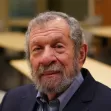The Daily Source of Urban Planning News

Controversial Toronto Mayor Removed From Office
After two years of making enemies in the city's planning, design, and transit communities, Toronto's Mayor Rob Ford has been given the boot for violating the city's conflict-of-interest law.
The Cost of Our Cities' Aging Gas Pipes
Andrew C. Revkin follows researchers in Boston on the hunt to map and measure leaky pipes hemorrhaging natural gas out onto the street.
Neither Snow Nor Rain Can Keep D.C. Bicyclists off the Roads
As colder temperatures and adverse weather descend on the District of Columbia, Ashley Halsey III finds that the city's emerging bicycling culture endures.
What Do America's Cities Stand to Lose from Rising Seas?
In an astonishing interactive graphic and accompanying opinion piece, Benjamin Strauss and Roberr Kopp outline several likely scenarios for the impact of rising seas on America's urban areas. New Orleans and Miami Beach could be completely submerged.
The New Promise of Urban Ecology
Courtney Humphries takes a look at recent federal investment in research on the complex interrelationship between human settlements and the natural environment.
Jockeying for a Gas Tax Increase from Fiscal Cliff Talks
It could be a win-win: Reducing the deficit, stimulating job creation, and avoiding the dreaded 'fiscal cliff'. Those pushing for a gas tax increase have joined other industries in using the need to raise and/or cut $500 billion to avoid recession.

An Argument for Eliminating Federal Transportation Funding
Charles Marohn turns a critical eye toward the inertia of federal transportation policy and the shortsightedness of its most treasured investment. Since America seems to be stuck with a federal transportation bill, he suggests ways to make it work.
In France, a Road Paved With Good Intentions
Clare Foran unravels the relationship between misguided '70s-era planning efforts and ongoing racial tension in France.
After the Storm, Public Housing Still Needs a Boost
The New York City Housing Authority is facing scrutiny after residents went almost a month without power, Nicole Anderson reports.
Adapting Modernist Landscapes for Contemporary Needs
Alex Ulam discusses the challenges of redesigning mid-century urban landscapes to accommodate contemporary tastes and social activities, drawing on examples like Dan Kiley's North Court at Lincoln Center and Boston City Hall Plaza.
Sandy Inspires Solar Companies to Rework System
Hurricane Sandy caused power outages that also prevented the use of hundreds of solar panels in the greater New York area. Solar companies are now working on decentralizing the system to make solar energy a backup source, reports Diane Cardwell.
Is the Arctic Poised to Become the Next Silk Road?
Philip Bump contemplates a future in which Arctic Ocean trade routes give rise to thriving port cities dotting the northern coasts of North America and Eurasia alike.
The Boulevard Makes its Comeback Along Toronto’s Waterfront
“Despite long ago having fallen from favour among North American city planners and traffic engineers, the multi-lane, multi-use, tree-lined avenue will soon return to our fair burg,” writes Christopher Hume.

Is a Little Danger Good for Playgrounds?
New research in child development is giving rise to playgrounds designed to build children's confidence in facing challenges and evaluating risk, Sumathi Reddy reports.
Fighting Homelessness, or Fighting the Homeless?
Martha Bridegam investigates the aftermath of a forced eviction at a homeless encampment in San Francisco. Do the homeless deserve to be criminalized?
Fracking Debate Shifts To $
The public is increasingly showing support for hydraulic fracturing of oil and gas - and it's reflected at the ballot box as many pro-drilling candidates were elected. In fact, the debate has shifted from banning to what to do with new tax revenue.
Friday Funny: "Our House, in the Middle of Our Street"
In China, the concerns of the few are unlikely to stand in the way of progress for the many. This has been made abundantly clear in Zhejiang province where a new motorway has been built around the home of a couple that has refused to move.
Rising to the Real Challenge of Sandy
Michael Kimmelman takes a hard look at the political and bureaucratic obstacles that stand in the way of a forward-thinking approach to rebuilding in the wake of Hurricane Sandy.
The Steps to Creating a Meaningful Vision
In the three steps of placemaking, crafting a meaningful vision is the first and most straightforward, yet it's the most under-leveraged. Continuing his series on "Municipal Placemaking Mistakes," Nathan Norris describes how to get it right.

Pittsburgh Asks Cyclists, Drivers and Pedestrians to Play Nice Together
Looking at public commentary following a spate of recent bicyclist accidents and incidents, Annie Siebert considers some of issues that Pittsburghers face as drivers, cyclists and pedestrians sharing the road.
Pagination
Yukon Government
Caltrans
New Jersey Institute of Technology
Mpact (founded as Rail~Volution)
City of Camden Redevelopment Agency
City of Norman, Oklahoma
City of Portland
City of Laramie
Urban Design for Planners 1: Software Tools
This six-course series explores essential urban design concepts using open source software and equips planners with the tools they need to participate fully in the urban design process.
Planning for Universal Design
Learn the tools for implementing Universal Design in planning regulations.


































